Explore the Historic Jardin des Tuileries – Paris' Iconic Garden
Jardin des Tuileries in Paris, the splendid public garden between the Louvre and Place de la Concorde, takes center stage as the place to meet, play, and relax. Today, as you stroll through the sun-dappled pathways, it's hard to imagine that this was ground zero for the French Revolution as well as the official residence of French kings and queens.
![]()
Our Top-Rated Paris Experiences
1. Seine River Romantic Dinner Cruise… With live music & champagne
2. Cheese and Wine Tasting in a Private Paris Cheese Cellar… Learn from a Master Affineur
3. Louvre Masterpieces Tour… Skip the lines for the best experience
4. Dinner Cruise with Maxim's of Paris… An Art Nouveau experience from 1900
A Long History

Begun in 1564 by Catherine de Medici (who, by the way, was the mother of three French kings) the Tuileries Garden opened to the public in 1667 and takes the title as the first garden in Paris open to everyone. But, when Catherine arrived, the area was nothing more than a marsh; it's where workshops, called tuileries, churned out tiles for the rooftops of Paris. Let's take a look back at the tumultuous past of the Jardin des Tuileries Paris and revel in how today it is a place of peace and calm in the heart of the city.
![]()
Discover What's On When You're Here...
• January... |
• February... |
• March... |
• April... |
• May... |
• June... |
• July... |
• August... |
• September... |
• October... |
• November... |
• December... |
Discover What's On When You're Here
• January...
|
• February... |
• March... |
|---|---|---|
• April... |
• May... |
• June... |
• July... |
• August... |
• September... |
• October... |
• November... |
• December... |
In & Around the Jardin des Tuileries
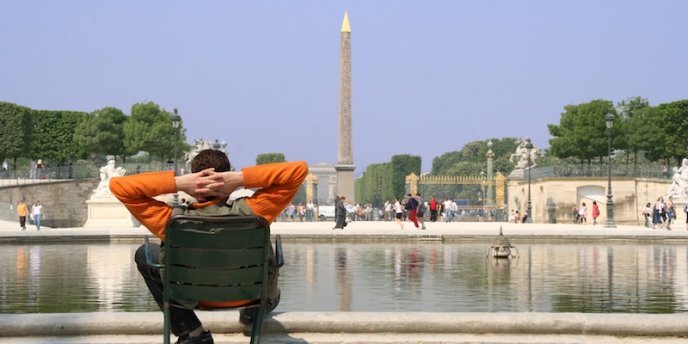 View from the Tuileries of Place de la Concorde, Champs-Elysées, and the Arc de Triomphe
View from the Tuileries of Place de la Concorde, Champs-Elysées, and the Arc de Triomphe
Jardin des Tuileries is one of the largest parks in Paris, stretching from the Louvre to Place de la Concorde, with a network of paths crisscrossing the 28-hectare garden. Sculptures by famous French sculptors dot the landscape; in fact, there are twenty works by Aristide Maillol alone (found in the Carrousel Garden).
Since the Tuileries are situated in the center of Paris, it's no surprise that the views from here are magnificent. If you stand in the middle of the Tuileries, eyes facing north, you see the historic buildings lining Rue de Rivoli. Looking right you see the wings and courtyard of the Louvre. Perhaps you can even imagine the Tuileries palace that once stood between the Louvre and the garden. Turn west, and the views are of Place de la Concorde and, beyond, the Champs-Elysées and the Arc de Triomphe. Turn south and, across the Seine, you can spot the Musée d'Orsay.
![]()
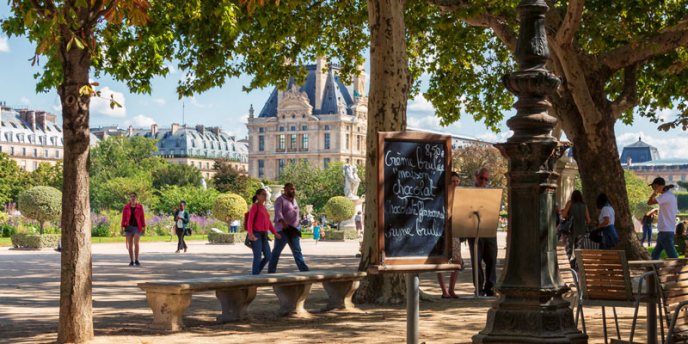 From the Tuileries you can see the Louvre. with the buildings of Rue de Rivoli to the left.
From the Tuileries you can see the Louvre. with the buildings of Rue de Rivoli to the left.
![]()
This is a place to lounge. The famous green chairs surrounding the ponds and fountains invite relaxation. Hungry? Take a break in one of the open-air cafes. Children will enjoy the playgrounds, Ferris wheel (in season), and the temporary fairgrounds set up during July and August.
Within the gardens, up against Place de la Concorde, are two museums. Musée de l'Orangerie holds permanent collections of Impressionist artists (including Monet's massive water lilies paintings) and contemporary art exhibits. Jeu de Paume is dedicated to photography. With all these attractions, it's no wonder the Tuileries Garden is one of the most popular public parks in Paris.
![]()
Find Hotel Deals for Your Dates in Paris
Check the complete list of Paris hotels to find current sale prices on rooms in every arrondissement. Save 10%, 20%… or even more! |
Paris Hotel Deals |
Find Hotel Deals for Your Dates in Paris
Save on hotels in every arrondissement of Paris – the Latin Quarter, Saint Germain, the Right Bank, the Marais, near the Eiffel Tower. Save 10%, 20%… or even more! |
A Fascinating History
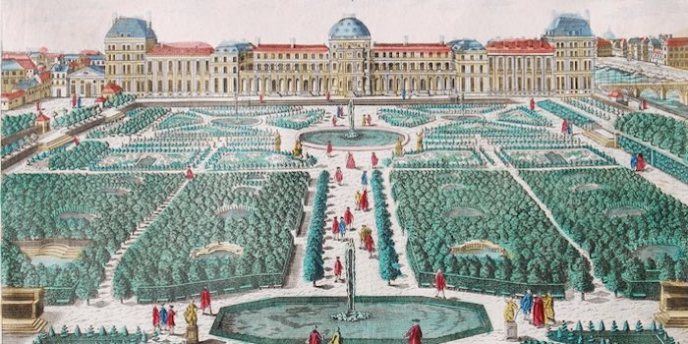 An early engraving of the Tuileries
An early engraving of the Tuileries
1559. Henry II dies unexpectedly after a jousting match at the age of forty. His widow, Catherine de Medici, leaves the stuffy Chateau des Tournelles (where La Tour d'Argent restaurant now stands) for the Louvre Palace. She decides to build a separate palace for herself and her surviving ten children. Among them is her son, the new king, François II. The Tuileries Palace and its gardens are going to be planned and built to create memories of her hometown, Florence.
Naturally, Catherine commissions a Florentine landscape architect to create an Italian Renaissance garden reminiscent of her childhood. The gardens are divided into six rectangular sections separated by alleys; each is planted with lawns, flower beds, and quinconces, clusters of five trees. The gardens also have a practical side, providing herbs and vegetables for the palace kitchens.
Once completed, the jardin is the talk of the town. Catherine uses the beautiful gardens for lavish royal events welcoming guests like Queen Elizabeth I of England and to host the marriage of her daughter, Marguerite de Valois, to the future Henry IV.
![]()
Skip-the-Line at the Louvre Museum
|
The Louvre's Greatest Masterpieces |
Louvre Skip-the-Line Tour |
|
The Louvre's Greatest Masterpieces |
That's Not the End of the Story…
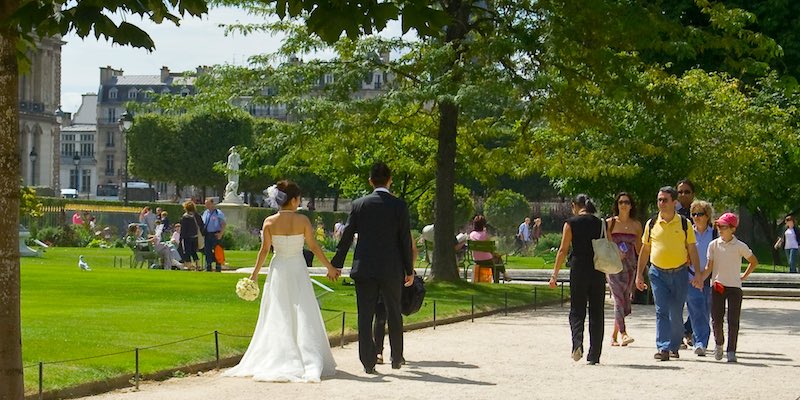
1588. In a battle between Catholics and Protestants, Henry III flees Paris. The gardens fall into disrepair. A decade later, Henry IV restores them and builds Jardin Neuf (new garden) with a large fountain in the center. Like many French rulers, Henry only uses the Tuileries Palace for entertainment, never as a residence.
1610. Louis XIII, age nine, is crowned king and,as such, is the new owner of the Tuileries Garden. It becomes his personal playground for hunting, horse riding, and a private zoo. When absent from court and Paris, Louis allows Jardin des Tuileries to be used by the nobility.
1643. Enter the Sun King. When Louis XIV comes to power he imposes his sense of order on the Jardin des Tuileries. After decades of muddling around, the Tuileries Palace is finally finished. To celebrate the birth of his first child, a pageant is held in the Jardin Neuf, thereafter known as the Place du Carrousel.
![]()
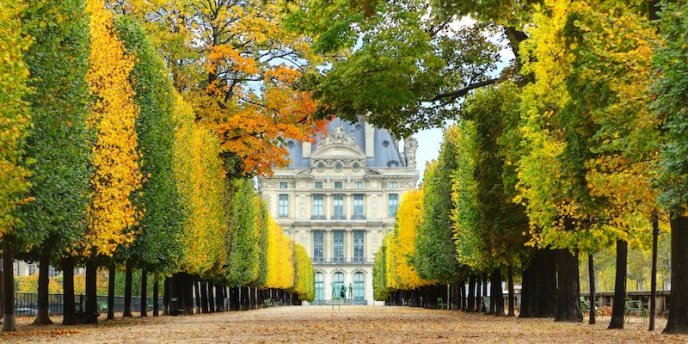
![]()
1664. Landscape architect André Le Nôtre is commissioned to redesign the entire garden. Le Nôtre comes from a long line of court gardeners — his grandfather was gardener to Catherine De Medici. He sets upon transforming the Tuileries into a formal French garden based on symmetry and order; a style he invented at Vaux-le-Vicomte and perfected at Versailles.
Le Nôtre's plans are grand and complicated — the street dividing palace from garden is replaced with a terrace and three fountains. In front of the first fountain he adds a grand allée, along with two other pathways, each lined with chestnut trees.
Le Nôtre wants the gardens to be seen from above and creates terraces on the four corners to frame the gardens. Next to Place de la Concorde two ramps in a horseshoe shape are built with two additional terraces to overlook the fountain. It takes six years and hundreds of masons, gardeners and workers to transform the gardens. By then, the impatient Sun King is fed up with Paris and Parisians. Annoyed, he leaves the city and the gardens behind to move the royal residence to Chateau de Versailles.
![]()
Experience the Splendor Of Versailles
|
Versailles with Priority Access + Gardens |
Half-Day, Skip-the-Line Tour of Versailles |
|
Versailles with Priority Access + Gardens |
Sleeping Beauty to the Paris Commune
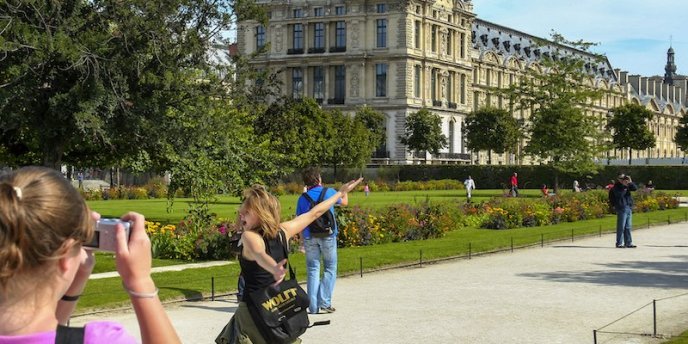
1667. Charles Perrault, author of Sleeping Beauty requests the gardens be open to the public. Jardin des Tuileries is the first royal garden in Paris to be so open. You can find his statue in the heart of the park. At the foot of the statue, look for Puss In Boots, a character Perrault introduced in a book of short stories.
1715. The Tuileries palace again becomes the royal residence. Crowned king at only five years of age, Louis XV is moved back to Paris by his regents, although he only stays at the palace for seven years before returning to Versailles. During his sixty years of rule, the main promenade through the Tuileries is extended west beyond Place to la Concorde as a broad avenue reaching all the way to the top of the hill. Thus, the Champs Élysées was born.
1789. After the storming of the Bastille, Louis XVI and his wife, Marie Antoinette move the family from Versailles to the Tuileries, hoping it will bring them closer to the people. The plan backfires. After the royal family's failed escape attempt, they are put under house arrest and forced to remain in the Tuileries.
1792. In August, the Tuileries Palace is attacked. Vive la Revolution ! The monarchy is abolished. The newly invented guillotine is set up next door in the Place de Concorde and the killing machine starts.
1799. Napoleon Bonaparte takes power and makes the Tuileries his imperial palace.
1872. During the Paris Commune, twelve men set the Tuileries Palace on fire. It burns for two days. The ruins stand for eleven years, until 1882, when the French National Assembly vote the palace should be demolished.
Jardin des Tuileries Resources
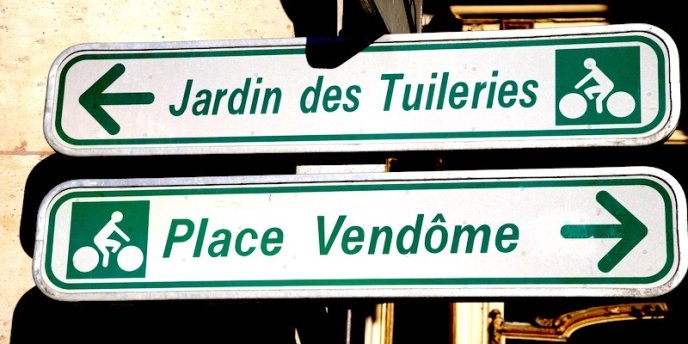
As you stroll through the Jardin des Tuileries, it's easy to understand why this garden is so popular with Parisians and visitors alike. Originally designed by Catherine de Medici in 1564, the Tuileries blends regal history with everyday Parisian life. Come to get a a break from the city's bustle then admire the classical sculptures, relax by one of the fountains, or people-watch from a park café.
For art lovers, the garden is perfectly situated between two of Paris' most iconic museums — the Louvre and the Musée de l'Orangerie, home to Monet's Water Lilies, not to forget Musée d'Orsay, reached by a pedestrian bridge. The garden transforms with the seasons — blooming flowers in spring and the stark beauty of the leafless trees during the Christmas season. Whatever your reason for visiting — a quiet break from the city or taking a scenic shortcut to your next destination — the Jardin des Tuileries captures the charm of Paris, offering beauty, culture, and tranquility in the heart of the city.
- Located next to the Louvre in the 1st Arrondissement
- Our 14-Part Guide to the Louvre…
Paris Planning Guides
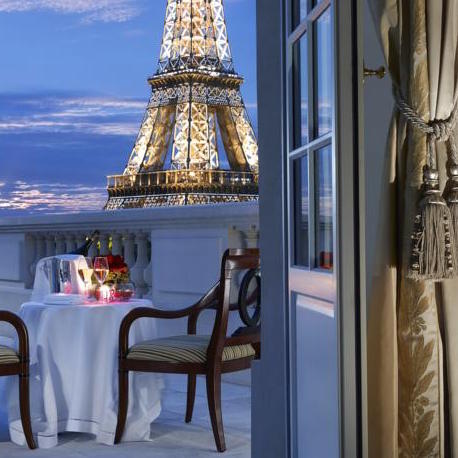 Paris Palace Hotels
Paris Palace Hotels |
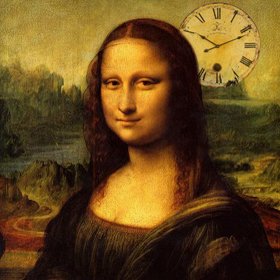 Skip-the-line Louvre Tour
Skip-the-line Louvre Tour |
 Glorious Dinner Cruises
Glorious Dinner Cruises |
 VIP to Champagne
VIP to Champagne |












